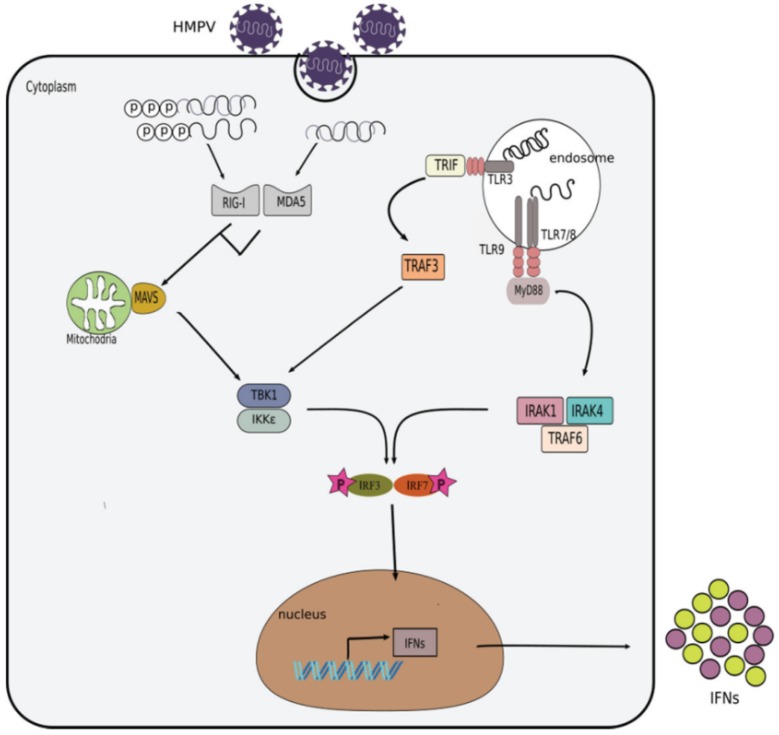Figure 2.
Induction of the interferon response by HMPV. During HMPV infection, its viral PAMPs are detected by toll-like receptors (TLRs) in the endosome and RIG-I-like receptors (RLRs) in the cytoplasm. Activation of TLR7/8 by ssRNA results in the recruitment of the adaptor molecule myeloid differentiation primary response protein 88 (MyD88). MyD88 further recruits and activates the interleukin 1 receptor associated kinases (IRAK1 and IRAK4) and the tumor necrosis factor receptor associated factor 6 (TRAF6) which in turn mediate the phosphorylation and activation of IRF7. Translocation of IRF7 into the nucleus triggers the expression of IFNs. In addition, dsRNA can be detected by TLR3 also in the endosome, which leads to the activation of TRAF3 and subsequent activation of the tank binding kinase-1 (TBK1)/I kappa B kinase epsilon (IKKɛ) kinases that eventually induce the phosphorylation of interferon regulatory factor 3 (IRF3) and IRF7. On the other hand, retinoic acid-inducible gene I (RIG-I) or melanoma differentiation associated factor 5 (MDA5) can be activated in the cytoplasm by 5′ppp-dsRNA, 5′ppp-ssRNA or long dsRNA, respectively. Activation of RIG-I or MDA5 subsequently activates the mitochondrial antiviral signaling protein (MAVS). MAVS recruits additional adaptor proteins that trigger the activation of TBK1/IKKε kinases. TBK1/IKKε phosphorylate IRF3/7 which then translocate to the nucleus to induce the expression of interferons.

